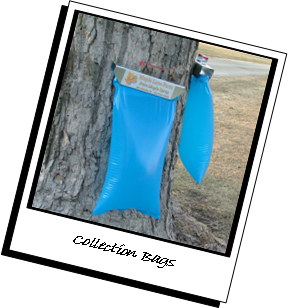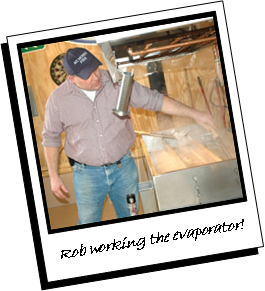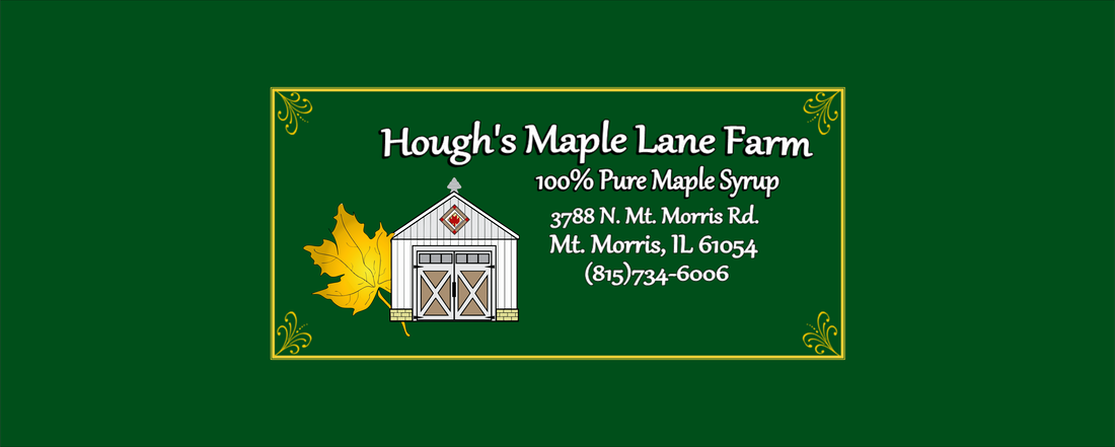How is Syrup Made

Making maple syrup is known as “sugaring“ and takes place across the Upper Midwest and Northeastern USA and Canada in the spring. The maple producers are called “sugarmakers“. The appropriate weather for sugaring season is that which alternates between freezing and thawing. This is what makes the sap flow. In Northern Illinois, sugaring weather usually starts around the beginning of February, and normally lasts for about six weeks. Snow is deep in the woods at the start of sugaring. When nighttime temperatures dip below freezing and daytime temperatures rise above freezing, the maple trees awaken from their long dormancy of winter and the sugaring season begins. The basic principles are the same for all sugarmakers – sap is collected from trees, water is removed from the sap by boiling, concentrating it into syrup. Nothing is added, nothing.
Making maple syrup is known as “sugaring“ and takes place across the Upper Midwest and Northeastern USA and Canada in the spring. The maple producers are called “sugarmakers“. The appropriate weather for sugaring season is that which alternates between freezing and thawing. This is what makes the sap flow. In Northern Illinois, sugaring weather usually starts around the beginning of February, and normally lasts for about six weeks. Snow is deep in the woods at the start of sugaring. When nighttime temperatures dip below freezing and daytime temperatures rise above freezing, the maple trees awaken from their long dormancy of winter and the sugaring season begins. The basic principles are the same for all sugarmakers – sap is collected from trees, water is removed from the sap by boiling, concentrating it into syrup. Nothing is added, nothing.

In the spring, maple sap contains a small quantity of sugar. The sugar concentration in sap is usually about 2%, trees are like people though, they have different personalities, sugar content can range from 1% to over 4%. At 2% sugar content it will take 43 gallons of sap to make 1 gallon of finished syrup (that is not a typo, it is really a 43:1 ratio)Sap is collected by drilling one or more “tap holes,” into the trunk of the tree. The tapholes are small, usually 7/16” in diameter and about 2” deep. The sugarmaker takes great care to drill the holes sparingly so that the tapping will not affect the health of the tree. These trees will continue to thrive for many generations. There are documented trees in New England that have been tapped continuously since the Declaration Of Independence was signed with no ill effects to the trees health. A sugar maple takes 40 years or more to reach the proper size for tapping. Trees that are 10” in diameter to 20” in diameter have one taphole. Larger trees may have two or three tap. A plastic or metal spout is placed into each tap hole & conducts the sap into a bucket or plastic tubing. The sap will run when the weather conditions are above freezing. A freeze will draw water into the roots from the soil and cause the sap to rise and travel up the tree. When the wood thaws, the sap is under pressure and sap will emerge from the taphole. Like all other types of farms, farm sizes varies, some sugarmakers collect sap from 100 taps and some from 40,000. A large group of maple trees is called a “sugarbush.” The traditional method of collecting sap is to hang a bucket on the metal spout. The sap fills the bucket, and every day, someone must go to each tree to gather the sap. It is hard work to empty all the buckets. A different way of collecting the sap is with collection bags. Just as with buckets they must be manually dumped each day. Whether by tubing, truck, tractor or horse drawn sled, the sap arrives at the sugarhouse. This is the where the evaporation of the sap takes place. Every sugarhouse will have a cupola or vent on the roof to remove the great quantities of steam that is produced from the boiling sap. When you see the steam rising and smell the faint sweetness of the syrup on the breeze, you know that an evaporator is fired up and sugaring season has begun. Visitors are always welcome! Once the sap arrives at the sugarhouse, it must be boiled as soon as possible to produce the highest quality maple syrup. The boiling takes place in an evaporator, which consists of stainless steel pans that sit on a large base called an arch, where the heat source is located. The evaporator may be as small as 2′ x 4′ or as large as 6’ x 20’, depending on the number of trees that are tapped in the sugarbush. Evaporators can be fired with wood, oil, or propane. In any case, a very hot fire is necessary to evaporate water from the sap.

In the evaporator, the sap follows a winding path through the pans as it boils and becomes thicker. The sap first enters the “flue” pan, which has deep channels to maximize contact between the sap and the fire. The boiling is very vigorous and great quantities of steam are produced. The sap then enters the “syrup” pan, which is divided into three or more compartments. As the sap moves through the syrup pan, it continues to increase in density as more water is boiled off. When the syrup reaches the draw off point, the temperature is 219 degrees (7.1 degrees above the boiling point of water) and density (66.9% sugar). Now the sugarmaker must open a valve and draw off finished syrup.
Once a batch of syrup has been drawn off, it is checked to assure the proper density (sugar content) with an instrument called a hydrometer. The hydrometer is a floating device that measures the specific gravity or density of the syrup. After this, the syrup must be filtered to remove a gritty substance called “sugar sand” or “niter.” Niter is the natural occurring minerals from the maple tree that precipitate out as the sap is boiled. To remove it, the hot syrup is passed through filters. It comes out clear and golden, ready to be packaged. Now the syrup is taste tested and color graded. The sugarmaker will package the syrup into retail containers or large food grade drums. This allows the syrup to be stored for later use.
Once a batch of syrup has been drawn off, it is checked to assure the proper density (sugar content) with an instrument called a hydrometer. The hydrometer is a floating device that measures the specific gravity or density of the syrup. After this, the syrup must be filtered to remove a gritty substance called “sugar sand” or “niter.” Niter is the natural occurring minerals from the maple tree that precipitate out as the sap is boiled. To remove it, the hot syrup is passed through filters. It comes out clear and golden, ready to be packaged. Now the syrup is taste tested and color graded. The sugarmaker will package the syrup into retail containers or large food grade drums. This allows the syrup to be stored for later use.

In recent years, the rising cost of energy has encouraged the use of new technology to help sugarmakers become more efficient. In a modern sugarhouse you will likely see a reverse osmosis machine. This works by pushing the sap through an extremely fine filter to remove large amounts of water from the sap, reducing boiling time and fuel usage. Another modern innovation are several different types of pre-heating and pre-evaporation hoods and pans which use the tremendous steam energy rising from the boiling pans thus increasing efficiency. These also condense the steam, providing large quantities of hot water for cleaning purposes.
Whether you visit a sugarhouse that uses traditional or modern techniques, or a combination of the two, you will see people hard at work during the spring when the sap is running. Sugarmakers have always been proud of their craft and the products they make. There is nothing quite like the taste of syrup warm from the evaporator. Enjoy this springtime tradition where you will gain appreciation for what it takes to create pure maple syrup.
Whether you visit a sugarhouse that uses traditional or modern techniques, or a combination of the two, you will see people hard at work during the spring when the sap is running. Sugarmakers have always been proud of their craft and the products they make. There is nothing quite like the taste of syrup warm from the evaporator. Enjoy this springtime tradition where you will gain appreciation for what it takes to create pure maple syrup.
